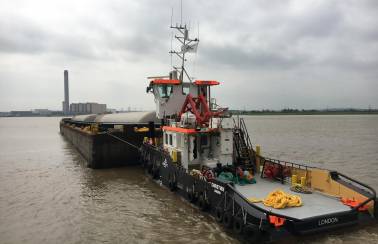Logistics network
We have an extensive logistics service which ensures we can deliver our products to the capital efficiently, consistently, and on time. Our focus is on surety of supply – ensuring you get what you need, exactly when you need it.
Where possible, we aim to minimise the environmental impact associated with the transport of products. For instance, in 2018 alone, Aggregate Industries transported 4.8 million tonnes of material by rail and 6.8 million tonnes by ship.
While on time delivery of our products to our customers’ sites is critical for the continued success of our business, we recognise that the transporting of our products and services in and around the busy streets of London can have adverse social and environmental impacts including:
- Use of fossil fuels
- CO2 emissions
- Road vehicle movements
- Nuisance to local residents.
…and we are actively working to reduce these issues in a number of ways.
For the movement of aggregates, containers, bulky materials, waste, plant and specialist items into, out of or within London and the South East, we utilise the rail and river network to ensure road miles are decreased. This includes bringing materials in from our quarries through rail to loading stations at Isle of Grain. From there, we are using one of the largest fleets of tugs and barges to move the products through London on the River Thames, Medway and the South East’s waterways.
When we do eventually have to use the road to transport materials across the capital, we use a fleet of modern, low carbon, Euro 6 emissions standard certified vehicles . We also plan our projects extensively with all parties – including local authorities – to ensure we use the most efficient, least disruptive routes in and out of site. Across Aggregate Industries, our transport emissions currently stand at 2.9 KgCO2e/ tonne the lowest level since we started reporting in 2008 when we emitted 4.21 KgCO2e/ tonne . This improvement is as a result of both better data collection and the aforementioned efficiencies in our logistics network.
Ever wondered how we transport aggregate sustainably to London without copious amounts of trucks on the road?







